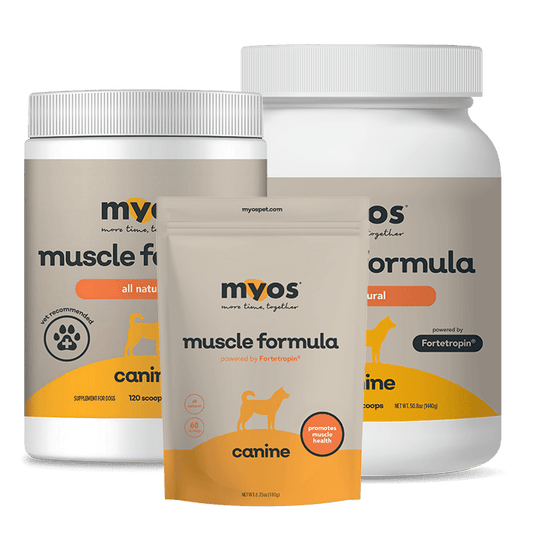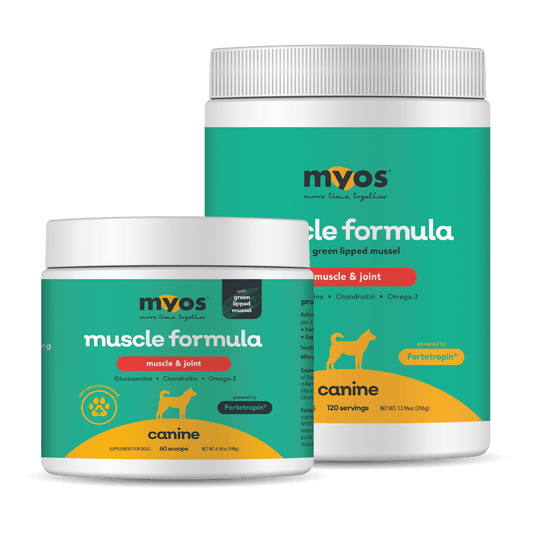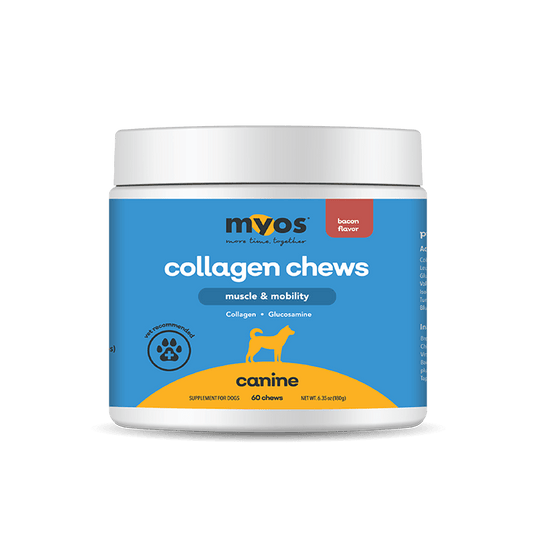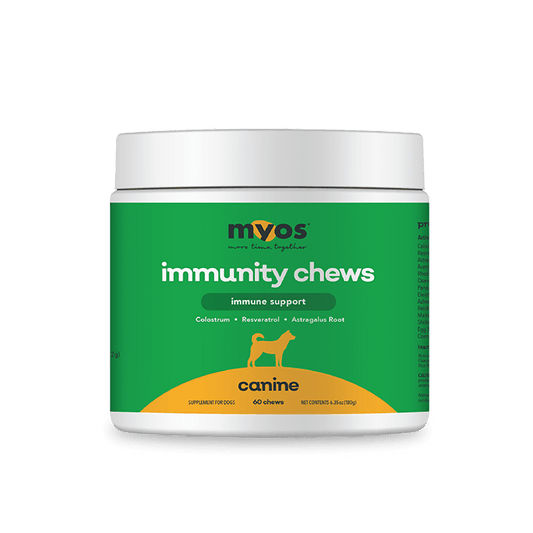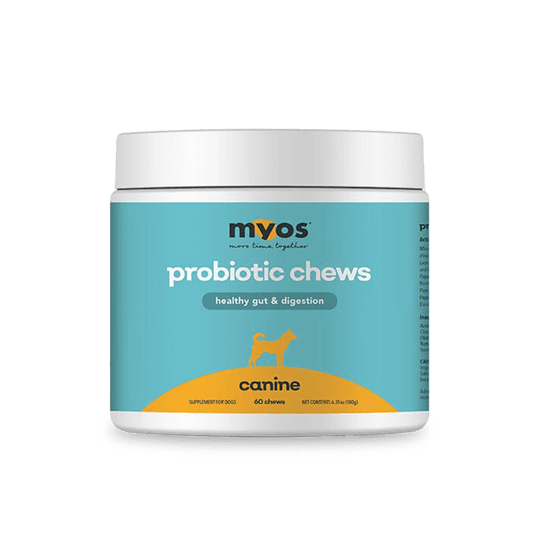Myogenic atrophy in horses results from several conditions in the horse, such as Cushing’s disease to disuse atrophy secondary to injury, to malnutrition and secondary, to various genetic or immune-mediated myopathies. Fortetropin® (MYOS CORP, Cedar Knolls, NJ) is a proprietary all-natural product derived from fertilized egg yolk. Studies in people, dogs and cats demonstrated that Fortetropin® (300mg/kg dogs) increases rate of muscle protein synthesis, reduces muscle atrophy, increases lean muscle mass and decreased Liverpool Osteoarthritis in Dogs (LOAD) scores in geriatric dogs.
The efficacy of Fortetropin® in horses has not yet been studied. A 2022 study investigated the safety and tolerability of Fortetropin® at two doses (24g, 48g).
Fifteen client-owned horses, housed at a veterinary rehabilitation center, were randomly assigned to three treatment groups (n=5), and were fed 2-weeks of either a placebo (cheese powder), Fortetropin® (24g) or Fortetropin® (48g). The initial formulation containing only Fortetropin® was unpalatable. Sugar (4.5g-9g/serving) was added to the Fortetropin® and the study resumed. Serum chemistry, hematology, and fibrinogen, as well as physical exams and body weight were measured prior to the study; on the first day of administration and at the conclusion of the study.
Horses ranged in age from 9 to 27 years in age, included two mares and thirteen geldings, and had the following breeds represented: Arabian, Paint, Quarter Horse, Thoroughbred, and Warmblood.
No adverse events were observed in any of the horses in all three groups receiving placebo or the sweetened formulation of Fortetropin®. Horses readily ate this formulation top dressed on moistened stable mix pellets.
Body weight was maintained, with one horse in the placebo group losing 4.1% body weight, and three horses in the 48g Fortetropin® group gaining 10.6%, 3.2%, and 2.5% body weight, with the remaining horses staying static (1% change in BW). Physical exams were unchanged throughout the study, with normal TPRs. No significant changes were observed in serum chemistry, hematology, and fibrinogen pre & post administration of Fortetropin® (see Annexes 1,2,3).
Our data suggest that horses tolerate Fortetropin® at doses of 72-109mg/kg. Further studies are needed on the efficacy of Fortetropin® in terms of the treatment of muscle atrophy in horses.
Investigator/Author:
Daizie Labelle, DVM, MBA, CCRP
drdaizie@petalumaequine.com
650-619-0338
Annexes
Annexe 1: Serum Chemistry - Out of Range
|
Horse |
Group |
Pre-Fortetropin®: Day 7 |
Post Fortetropin®: Day 21 |
|
1 |
48g |
K+(5.4); CA(14.3) |
|
|
2 |
48g |
CA(14.5); ALB(3.7) |
CA(14.7):BUN(26) |
|
3 |
48g |
|
GGT(32) |
|
4 |
48g |
K+ (5.4); Ca(14.2) |
K+(5.3); CA(14.2) |
|
5 |
24g |
K+(5.5); Glu (115) |
CA(14.6) |
|
6 |
24g |
|
K+(6.1) |
|
7 |
placebo |
GGT(41) |
|
|
8 |
placebo |
CA(14.3) |
K+(5.7) |
|
9 |
placebo |
ALB(3.7) |
ALB(3.7);GLOB(2.6) |
|
10 |
placebo |
K+(5.5); Ca (14.5) |
CA (15.1) |
|
11 |
24g |
K+ (5.5); CA(15.9), AST(132) |
K+(5.4);CA(15.1): AST(131) |
|
12 |
24g |
K+ (5.4) |
CA(14.3) |
|
13 |
48g |
|
K+(5.5) |
|
14 |
24g |
|
K+(5.9) |
|
15 |
placebo |
K+ (5.4) |
K+(5.3) |
Relevant reference ranges:
ALB: 2.2-3.7 g/dL, AST: 175-340 U/L, BUN: 7-25 mg/dL, CA: 11.5-14.2 mmol/L
K+: 5.5-5.2 mmol/L, GGT: 5-24 U/L, GLOB: 2.7-5.0 g/gL
Annexe 2: Hematology - Out of Range
|
Horse |
Group |
Pre-Fortetropin®: Day 7 |
Post Fortetropin®: Day 21 |
|
1 |
48g |
|
WBC(5.02) |
|
3 |
48g |
|
WBC(4.93) |
|
6 |
24g |
RBC(6.57) |
|
|
8 |
placebo |
|
WBC(4.94) |
|
10 |
placebo |
LYM(5.22) |
WBC(4.69) |
|
13 |
48g |
EOS(1.01) |
LYM(1.46) |
|
15 |
placebo |
WBC(4.81); LYM(1.37); HGB(10.9) |
LYM(1.49) |
*Platelets were verified manually - all were WNL
Relevant reference ranges:
WBC: 5.40-13.40 RBC: 6.80-12.90
LYM: 1.50-7.70 HGB: 11.0-19.0
EOS: 0.00-1.00
Annexe 3: Fibrinogen – Out of Range
|
Horse |
Group |
Pre-Fortetropin®: Day 7 |
Post Fortetropin®: Day 21 |
|
15 |
placebo |
101 |
258 |
Reference: 76-230 mg/dL


